Crazy Rich Asians isn't a film - it's a cultural moment.
As seen in the all of passionate essays which keep flying in from one pop culture commentator after another, an entire generation of Asian-Americans have waited all their lives for something like this. A major Hollywood studio committed thirty million dollars to making and releasing a film featuring an all-Asian cast (headlined by Fresh Off the Boat's Constance Wu) working under the direction of an Asian man ( Step Up 3D 's Jon M. Chu) and following a script co-written by an Asian woman (Adele Lim) who adapted the story from a series of bestselling novels written by an Asian man (Kevin Kwan).
Not since The Joy Luck Club has anything like this seen the light of day in Hollywood. It's been enough to inspire spontaneous, cathartic tears from some audience members who didn't even realize how much they needed this. That's exactly why Kevin Kwan turned down more money and the guarantee of artistic freedom and a trilogy from Netflix. He knew this moment needed to be shared by everyone on screen, not at home or on the go on their laptop, tablet or phone. The cast feels the same way.
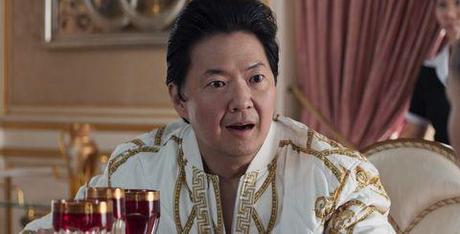
As Ken Jeong, who headed his own workplace sitcom Dr. Ken for two seasons and now co-stars in Crazy Rich Asians as the over-the-top, nouveau rich Papa Goh, told Variety, "It's really hard to describe if you're not Asian American, how emotional when people watch this, I cry [...] The characters that I care about in the first forty-five minutes [of the movie], you realize they all look like me and something comes over me where it's not a plot point anymore, it's something, and that's what the best movies do. It's not about the talent, it's not about anything, it's about connecting. All forms of entertainment are about connecting. And this is the first major cinematic experience [like that for us] in twenty-five years."
Crazy Rich Asians actual merit as a film - it's a big, bright, formulaic rom-com that plays like Meet the Parents mixed with Coming to America mixed with, well, The Joy Luck Club and Amazing Interiors: Shanghai Edition - is almost beside the point. The power of feeling seen is more than enough to make up for any of the story's rough edges, such as how Constance Wu's protagonist has to be repeatedly told by her far more colorful co-stars to not give up and actually fight back. Yet, you don't really have to be wearing diversity goggles to look past the flaws. As ScreenZealots argued, "I have very few criticisms for this movie because it sets out to create a breezy, lighthearted piece of escapist entertainment and exceeds all expectations."
So, for any critic who might wish to throw hot water on the overwhelmed fans and declare "Geeze, you'd think they'd never seen a rom-com before" the answer is a loud "They haven't!" At least not like this. The climactic mahjong scene, which sees Wu and Michelle Yeoh (as her disapproving mother-in-law-to-be) making their closing arguments over a suspenseful game of mahjong which is not at all explained to anyone unfamiliar with the rules, has practically already passed into legend.
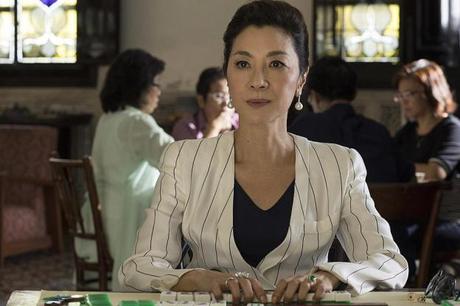
Yet, there's something awfully familiar about this, not so much Crazy Rich Asians itself but this specific moment of hearing yet another glass ceiling crumble beneath our feet.
Crazy Rich Asians is but the latest of several so-called cultural moments we've shared in movie theaters recently. After years upon years of hearing business-based (more diversity means higher ticket sales/ratings), story-based (more diversity means more diverse and thus better stories), and cultural-based (the industry has a responsibility to advance positive representations of more than just young, straight white dudes) arguments for why they should make more movies with/for women, people of color, and LGBTQ individuals, the Hollywood machine has finally responded. In just the last 18 months, we've seen:
- The first black-directed, black-starring film (Get Out) to speak to post-Obama, Trump-era anxieties and make a killing at the box office in the process.
- The first notable female superhero movie (Wonder Woman) in over a decade, and if you go by budget the first genuinely blockbuster-sized female superhero movie ever
- The first black superhero movie (Black Panther) not connected to blaxploitation or the Blade franchise. All it did was break Titanic's box office record.
- The first Hollywood Studio-released film (Love, Simon) to focus on a gay teenage romance and to be directed by an openly gay man (Greg Berlanti). Of the four, this was the least financially significant moment (domestic gross topped out in the $40m range).
A little further away from the spotlight, Kay Cannon became the first woman of this generation to direct an R-Rated sex comedy ( Blockers), Ava DuVernay became the first woman of color to direct a Hollywood film (A Wrinkle in Time) with a nine-figure budget, and A Quiet Place scored points for casting an actual deaf actress to play John Krasinski's deaf daughter, whose disability proves crucial to the plot.
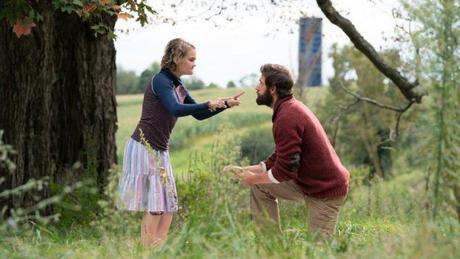
Now, there's Crazy Rich Asians, which drew an opening weekend audience that was 40% Asian, an unheard of pull for any Hollywood movie these days. Give it 7-10 more days and it will have probably already broken even.
Of course, our conversation in this arena is ever-ongoing and pragmatism often ends up dueling with idealism. Should Scarlett Johansson be allowed to play a transgender man if her casting is the only way the movie will get made? Is it okay for Dwayne Johnson to draw attention to the plight of amputees by playing one in Skyscraper even though he himself still has both of his legs? Is Love, Simon actually gay enough? Should Crazy Rich Asians be criticized for not always casting the right kind of Asians? Is it wrong that the half-Caucasian, half-Korean protagonist of Netflix's delightful teen rom-com To All the Boys I've Loved Before has five different love interests and not a single one of them is Asian? If it helps, they at least made one of the guys black, race-switching him from the book.
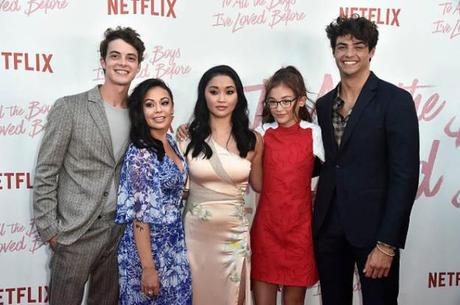
Still, as a white person, seeing Crazy Rich Asians in a theater full of Asian people - as I had the privilege to do this weekend - is strikingly similar to seeing Back Panther with a lot of black people or Wonder Woman with mostly women. It's an exercise in watching long-held default settings in pop culture finally wash away. The transfixed looks on the faces of people seeing themselves represented on screen for the first time is a prime example of the transformative power of cinema. It's the kind of experience we go to the movies for in the first place.
However, this type of success easily tricks us into thinking diversity initiatives are going better than they actually are:
Why is it that when you Google "Hollywood diversity behind the scenes" the top results are still nothing but depressing headlines indicating, at best, incremental progress in the past decade?
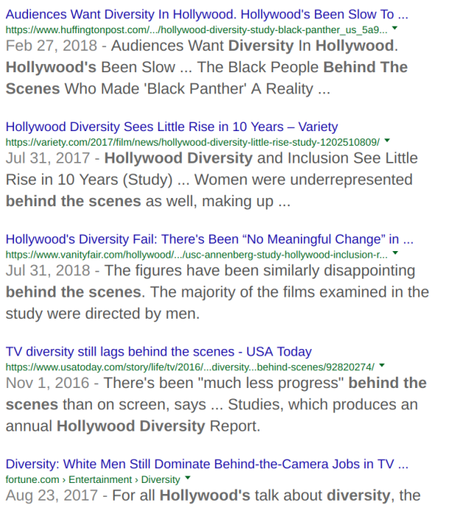
As Stacy L. Smith, founding director of USC's Annenberg Inclusion Initiative, said in a recent press release touting the most recent, mostly depressing inclusion data. "Hollywood has yet to move from talking about inclusion to meaningfully increasing on-screen representation for women, people of color, the LGBT community, or individuals with disabilities [...] The lack of inclusion on screen is matched and exceeded by the exclusion behind the camera."
To be fair, this problem is not exclusive to Hollywood. As researchers argued at last year's Society of Motion Picture and Television Engineers (SMPTE) conference, "In recent years there has been a rise in diversity initiatives throughout the entertainment and STEM industries in response to mounting criticism. While college programs have been found to represent the general population well in terms of diversity, that drops off sharply after graduation, and our industry becomes largely homogenous in top-tier positions. Many initiatives are struggling to make a meaningful impact, especially when it comes to changing the face of our industry's above the-line professionals."
The problem, they argued, is that talking so much about inclusion and making statistically small, but highly public gains allows everyone to move forward under the false assumption that things have changed when the actual employment and on-screen representation statistics actually stay the same or even worsen, in some areas. This allows well-funded and well-meaning diversity initiatives at STEM companies and Hollywood studios to continue on as they have been for years despite limited success. The solution is more women and people of color in decision-making executive ranks, but until then there are practical suggestions, such as focusing harder on recruiting straight out of college and ending unpaid internships ( head here to read the full SMPTE report).
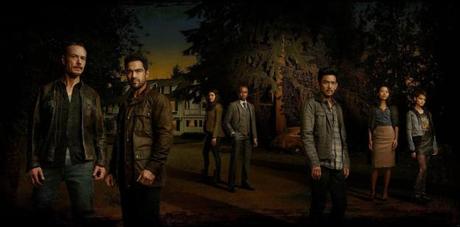
John Cho, who broke genre tradition by being an Asian man allowed to play the villain in the TV horror series version of The Exorcist and will next be seen as a concerned father in Searching, seems to have put it best: "I hope it's not a moment, I hope it becomes the norm."
He was talking to the Southern California News Group about the recent uptick in Asian-American films, Crazy Rich Asians especially, "I hope these films are a success and it indicates that we should make more of these, that it becomes normalized and there's no need to note it."
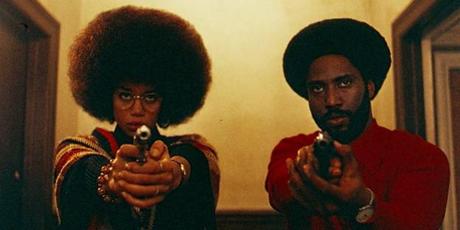
As a film fan, it certainly feels like things are different than they were a couple of years ago. It's far easier to find movies and TV shows made by and starring women and people of color. More and more actresses fed up with the Hollywood system are starting their own production companies and cranking out shows like Big Little Lies. Ken Jeong, in addition to his sitcom and film work, has thrown his own money behind several indie films from Asian directors. I've lost track of how many projects Jordan Peele is working on now. Meanwhile, Sorry to Bother You, BlacKkKlansman and Blindspotting are already high on many critics lists this year.
The statistics say otherwise, though. Progress has actually been incremental.
It's sad state of affairs that in 2018 we still have to have cultural moments like seeing our first black superhero movie or first all-Asian Hollywood movie since the first year of the Clinton administration. Don't get me wrong. Getting to be a part of those moments, even as an outsider, has reminded me of the type of magic the communal moviegoing experience can still conjure. But it's just so disgraceful it's taken this long. What would make this all so much sadder, though, is if this is allowed to remain a moment and not a sustained movement.
So, go see Crazy Rich Asians. But also check out Searching. Try to find Blindspotting if it's playing near you. Debate the more controversial parts of BlacKkKlansman. Mostly, just engage with Hollywood's diversity push, if you aren't already. It's the only way it'll become the new normal.

